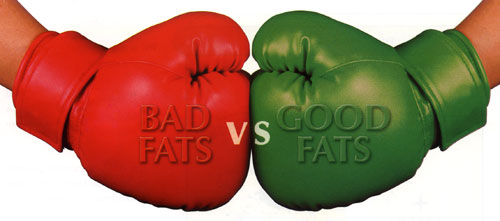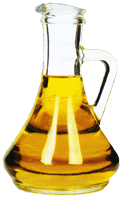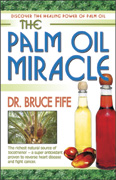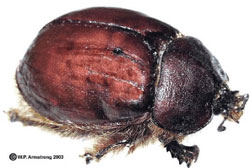|
E-Mail Edition Volume 6 Number 1 |
|||
|
Originally published Winter, 2009 Published by Piccadilly Books, Ltd., www.piccadillybooks.com. Bruce Fife, N.D., Publisher, www.coconutresearchcenter.org |
|||
|
If you would like to subscribe to the Healthy Ways Newsletter
|
Contents
|
||
|
|
Study Shows Coconut Oil Fights Pneumonia
A new study reveals that virgin coconut oil, added to antibiotic therapy, can help relieve the symptoms of community-acquired pneumonia in children faster than antibiotic therapy alone. Children who received coconut oil therapy along with antibiotics had fewer crackles (a wheezing sound in the lungs), a shorter time with an elevated respiratory rate and fever, better oxygen saturation in the blood, and shorter hospital stays, according to the study. "Earlier normalization of respiratory rate and resolution of crackles could also mean possible earlier discharge," said the study's lead author, Dr. Gilda Sapphire Erguiza, a pediatric pulmonologist at the Philippine Children's Medical Center in Quezon City. The study's findings were recently presented at the American College of Chest Physicians meeting in Philadelphia. Community-acquired pneumonia is an infection of the lungs that is contracted outside a hospital setting. It is a serious infection in children and affects as many as 34 to 40 youngsters per 1,000 children in Europe and North America, according to the American Academy of Family Physicians (AAFP). Lower respiratory infections are one of the leading causes of childhood mortality in developing countries, according to the AAFP. The current study included 40 children between the ages of 3 months and 5 years old. All had community-acquired pneumonia and were being treated intravenously with the antibiotic ampicillin. Half of the group was randomized to also orally receive virgin coconut oil in a daily dose of 2 milliliters per every kilogram of weight. The oil was given for three days in a row. The researchers found that the respiratory rate normalized in 32.6 hours for the virgin coconut oil group versus 48.2 hours for the control group, according to the study. After three days, patients in the control group were more likely to still have crackles than those in the coconut oil group—60 percent of the controls still had crackles compared to 25 percent of the coconut oil group. Those in the coconut oil group also had fevers for a shorter time, had normal oxygen saturation faster, and had shorter hospital stays. How might the coconut oil work to ease pneumonia? Erguiza hypothesized that it may boost ampicillin's effectiveness because it contains lauric acid, which is known to have antimicrobial properties, she said. This study is just one of many that have be conducted over the past several decades demonstrating the disease-fighting power of coconut oil. ■
SOURCES: Gilda Sapphire Erguiza, M.D., pediatric pulmonologist, Philippine Children's Medical Center, Quezon City, Philippines; US News and World Report, Oct. 30, 2008.
|
||
|
|
|
||
|
|
Good Fat Versus Bad Fat
Some fats are better than others. Some can be consumed in larger amounts than others. Some need to be eaten in balance with others. Some fats, those that are adulterated or man-made, should not be eaten at all. The problem is that many of us are confused as to which is which. Most saturated fats, and particularly coconut and palm oils, are some of the healthiest you can eat. Natural fats which have undergone as little processing and adulteration as possible are the healthiest, regardless of whether they are saturated or unsaturated. In contrast, many polyunsaturated fats are so far removed from their natural state and often chemically altered as to become a serious health threat. Fats are vital nutrients that the human body relies on to achieve and maintain good health. An adequate amount of fat is necessary for proper digestion and nutrient absorption. Fats delay the movement of food through the stomach and digestive system. This allows more time for foods to bathe in stomach acids and stay in contact with digestive enzymes. As a consequence, more nutrients, especially minerals which are normally tightly bound to other compounds, are released from our foods and absorbed into the body. Low-fat diets are actually detrimental because they prevent complete digestion of food and limit nutrient absorption. Low-fat diets can promote mineral deficiencies. Calcium, for example, needs fat for proper absorption. For this reason, low-fat diets encourage osteoporosis. It is interesting that we often eat low-fat foods including non-fat and low-fat milk to get calcium; yet, by eating reduced fat milks, the calcium is not effectively absorbed. This may be a reason why people can drink loads of low-fat milk and take calcium supplements yet still suffer from osteoporosis. Fat is also required for the absorption of fat-soluble vitamins. These include Vitamins A, D, E, and K and important phyto-nutrients and antioxidants such as beta-carotene. Too little fat in the diet can lead to deficiencies. Getting too much fat is less of a problem than getting too little. We are always encouraged to eat less fat because fat is believed to make us fat. This is just not so. Recent studies actually show that people eating the same amount of calories can lose more excess weight on moderate- and high-fat diets than they can on low-fat diets. In most countries, fat consumption ranges from 20-40% of total calories. Health experts often recommend limiting fat calories to 30% to reduce risk for heart disease. However, studies on populations that exceed this limit do not show any higher incidence of heart disease than those that eat less total fat. A healthy diet should include an adequate amount of good fat. The question is: which fats are good and which aren't?
Polyunsaturated Fats We hear a lot about how 'good' unsaturated fats are for us. What consumers don't know is that polyunsaturated vegetable oils can be far more harmful than saturated fats. Over the past two decades, mountains of research have confirmed this. Researchers have found that the consumption of polyunsaturated vegetable oil exceeding only 10% of total calories can lead to blood disorders, cancer, liver damage, and vitamin deficiencies. Excessive consumption has been linked to:
Avoiding Free Radicals Polyunsaturated fats are highly vulnerable to oxidation. When exposed to heat, light, or oxygen, they spontaneously oxidize and form destructive free radicals that attack unsaturated fats and proteins. In turn, these become oxidized and generate more free radicals. It is a self-perpetuating process. When oil is extracted from seeds, the oxidation process is set in motion and continues right through bottling and even during distribution. When used in cooking, oxidation is greatly accelerated. Oxidation occurs inside the body as well. Our only defense against free radicals is antioxidants, which stop the chain reaction that depletes nutrients such as Vitamin A, C, and E, zinc and selenium. In contrast, saturated fats are very resistant to oxidation. They act as protective antioxidants because they prevent oxidation and the formation of free radicals. Monounsaturated fatty acids are more stable than polyunsaturated fatty acids but less stable than saturated fatty acids. Replacing polyunsaturated fats with saturated and monounsaturated fats can help reduce the risks associated with free radicals. Eating a diet rich in antioxidant nutrients such as Vitamin E and beta-carotene will help against oxidation of polyunsaturated fatty acids in the body.
Heat-damage and Vegetable Oils Most cooks recommend polyunsaturated vegetable oils in cooking and food preparation as a "healthy" alternative to butter, palm oil or other saturated fats. Ironically, these unsaturated vegetable oils, when used in cooking, form a variety of toxic compounds that are far more damaging to health than any saturated fat. As it turns out, polyunsaturated vegetable oils are the least suitable for cooking. Any unsaturated vegetable oil can become toxic when heated. And even a small amount, especially if eaten frequently over time, will affect health. Oxidized oils have been found to induce damage to interstitial tissues and blood vessel walls and to cause numerous organ lesions in animals. Researchers are now beginning to recognize that heated vegetable oils are far more harmful to the heart and circulatory system than excess cholesterol or animal fats. Monounsaturated fatty acids are chemically more stable and can withstand higher temperatures, yet they too can be oxidized and form toxic by-products if heated to high temperatures. Saturated fatty acids are very heat stable and can withstand relatively high temperatures without oxidation. Therefore, saturated fats are the safest to use for day-to-day cooking and baking.
Saturated Fat Yet, we have been led to believe that saturated fat is detrimental to health. If so, why is it in just about everything we eat? Meat, milk, and eggs contain the largest amount, but saturated fats are also found in nuts, seeds, grains, and beans. Even broccoli, carrots, and peas contain some saturated fat. Furthermore, every cell in the human body consists of at least 50% saturated fat. The truth is that saturated fat is a vital nutrient for optimal health. It serves as an important source of energy and aids in the absorption of vitamins and minerals. As an ingredient, fat provides taste, consistency, and stability and helps us feel full. Saturated fat is necessary for proper growth, repair, and maintenance of body tissues, and for good lung function. It is the preferred source of energy for the heart muscle. It also helps protect the unsaturated fats in our body against free radicals. The primary reason why saturated fat is criticized is because some forms can raise cholesterol levels, which is a sign of increased risk for heart disease, but not the cause. There are many risk factors. Being male or being physically inactive is also a risk factor but does not in itself cause heart disease. Saturated fat is so essential to health that the body is programmed to make it out of other nutrients. Getting an adequate amount of saturated fat is so important that it is not left to chance. Researchers are learning that too little saturated fat in the diet can adversely affect health. Some may argue that, since saturated fat (and monounsaturated fat) can be made by the body from other fats and carbohydrates, we don't need to include it in our diet. But relying on the body alone would create a great deal of stress and cause a fatty acid imbalance. We don't need to look too far for a solution. Nature has provided practical assistance by way of palm oil — the ideal all-purpose dietary oil. Its fatty acid content is remarkably similar to that of the human body — 50% saturated, 40% |
||
|
|
monounsaturated and 10% polyunsaturated. Not only does it provide a natural balance of all three fat types, it is also very heat stable and therefore makes excellent cooking oil. ■
Article reprinted from Global Oils and Fats Business Magazine, Vol. 5, Issue 3, 2008. This article is adapted from a chapter in the book The Palm Oil Miracle by Dr. Bruce Fife
|
||
|
|
Trans Fats Banned By Jennifer Steinhauer California, a national trendsetter in all matters edible, became the first state to ban trans fats in restaurants when Gov. Arnold Schwarzenegger signed a bill to phase out their use. Under the new law, trans fats, long linked to health problems, must be excised from restaurant products beginning in 2010, and from all retail baked goods by 2011. Packaged foods will be exempt. New York City adopted a similar ban in 2006 — it became fully effective on July 1 — and Philadelphia, Stamford, Conn., and Montgomery County, Md., have done so as well. But having the requirement imposed on the most populous state's 88,000 restaurants, as well as its bakeries and other food purveyors, is a major gain for the movement against trans fats. That movement has been led by scientists, doctors and consumer advocates who trace the largely synthetic fat to a variety of ailments, principally heart disease. "I think the potential here is real for a far greater understanding of the harms of trans fats, and to encourage more states to do the same," Dr. Clyde Yancy, incoming president of the American Heart Association, said of the California law's enactment. Trans fats are created by pumping hydrogen into liquid oil at high temperature, a process called partial hydrogenation. The process results in an inexpensive fat that prolongs the shelf life and appearance of packaged foods and that, many fast-food restaurants say, helps make cooked food crisp and flavorful. But trans fats have also been found in scientific studies to lower high-density lipoproteins, the "good" cholesterol, while increasing low-density lipoproteins, the "bad" cholesterol, high levels of which contribute to the onset of heart disease, the leading cause of death in California and the nation. Dr. Yancy said a 2 percent increase in trans-fat intake could result over time in a 25 percent increase in the likelihood of developing coronary artery disease. "These are data we are just now beginning to understand," he said. "It is pretty clear now that it was a mistake for us to embrace these fats." Under the new law, restaurants, bakeries, delicatessens, cafeterias, and other businesses classified as "food facilities" will, in the preparation of any foods, have to discontinue use of oils, margarine, and shortening containing trans fats. Those purveyors will have to keep the labels on their cooking products so that the products can be inspected for trans fat, a process that will become part of the duties of local health inspectors. Violators will face fines beginning at $25 and increasing to as much as $1,000 for subsequent violations. Trans fats are also linked to obesity, and the bill's author, Tony Mendoza, a Democratic assemblyman and former fourth-grade teacher from Southern California, said he had been inspired by the number of obese children he saw in school. "They are heavy," Mr. Mendoza said. "They eat out a lot, and you realize there are trans fats out there. You don't want kids to start off on the wrong foot." Opposition to the move came largely from the California Restaurant Association, which argued that singling out trans fats as a singularly harmful food product was arbitrary and that a mandate would prove expensive. Further, the association said, a ban for health reasons is the purview of the federal government, not the states. "We don't doubt the health findings surrounding trans fats," said Lara Dunbar, the association's senior vice president for government affairs. "Our opposition was philosophical. Banning one product isn't necessarily the right solution." In addition, Ms. Dunbar said, many of the state's restaurants have already eliminated trans fats. "We don't think you need a mandate," she said. "Restaurants responded to a consumer demand." Among national chains, Wendy's, KFC, Taco Bell, the Cheesecake Factory, and McDonald's have all begun to move away from trans fats because of consumer concerns. In many high-end restaurants in this state — where the organic foods movement began and where many a food trend has been born — chefs would no more use trans fats in their cooking than use paper tablecloths in their dining rooms. Some restaurateurs, however, say the change has been costly, because there are fewer distributors of the alternative oils. "The only effect it is going to have on the consumer is that we are going to have to raise our prices," said Tina Pantazis, the manager of Dino's Burgers, which operates two hamburger outlets — one in Los Angeles, the other in Azusa. Ms. Pantazis said the price of those restaurants' French fries, which now cost $1.75 an order, would most likely be bumped up to at least $2.75. The Dino's in Los Angeles has already begun using new oils, she said, adding that she could taste the difference but that there had been no complaints from customers. The Azusa location will move to be compliant soon. "I think this is good for the health of the consumer," Ms. Pantazis said. "On the other hand, people who eat French fries are not concerned with their health that much." To many health policy makers, though, trans fats have become almost the enemy that cigarettes became long ago. New York's anti-trans-fat movement, led by Mayor Michael R. Bloomberg, is still in its early days. The first phase, which began last year, made a target of frying oils and spreads. This month, the program was extended to baked goods. Nearly all the 25,000 restaurants inspected have proved compliant, according to the city's health department. New York has also offered a Trans Fat Help Center where bakers were schooled in the use of alternative fats. California, which supplies a great deal of the nation's specialty crops, already has some of the toughest food restrictions in the nation, including a ban on junk food and trans fats in school meals. On Friday, Mr. Schwarzenegger, a Republican whose positions on consumer issues often align closely with those of Democrats who control the Legislature, praised the new statute, which the lawmakers passed last week. "California is a leader in promoting health and nutrition, and I am pleased to continue that tradition by being the first state in the nation to phase out trans fats," the governor said in a statement. "Consuming trans fat is linked to coronary heart disease, and today we are taking a strong step toward creating a healthier future for California." ■
|
||
|
|
Bugs in Your Food There May Be More in the Packaged Food You Get At the Grocery Store than You Think
As it turns out, there really may be a bug in your soup. The Food and Drug Administration has finalized a rule that will require food companies to list cochineal extract and carmine on the label when they are used in food and cosmetics. But the new rule contains one glaring omission. It doesn't require companies to tell you that the ingredients come from a bug. |
||
|
|
Female Cochineal Bug |
Cochineal extract and carmine, used to dye food, drinks and cosmetics various shades of red, orange, pink and purple, are extracted from the dried bodies of the female cochineal bug. The F.D.A. typically doesn't require color additives to be named on food labels. |
|
|
|
For years, the bug extracts "have been hidden under the terms 'artificial colors' or 'color added,' according to the Center for Science in the Public Interest. The group says the extracts are commonly used in reddish-colored foods and beverages, including fruit drinks, ice creams, yogurts and candies. However, the F.D.A. required the ingredients be listed after University of Michigan allergist Dr. James L. Baldwin reported that some of his patients suffered severe allergic reactions to the bug extracts. After C.S.P.I. petitioned the F.D.A. in 1998, the group also received several dozen adverse-reaction reports from consumers. In a statement, the group criticized the ruling, noting that labels should make it clear that the extracts come from bugs. They argue that people with allergies who want to avoid the foods for health reasons are well aware of what the ingredients are made from. But vegetarians and people of certain religious faiths who would typically avoid a bug-based product may not be aware of the origins of the extracts without more disclosure on the food label. But the F.D.A. said that the labeling rule that requires companies to just list the name of the ingredient and nothing else gives "adequate information" to consumers who want to avoid the bug-based colorants for religious or dietary reasons. The new rule will take effect in 2011. ■ |
||
|
|
Bonus Feature Dave Barry Looks At the Colon By Dave Barry Dave Barry is a Pulitzer Prize-winning humor columnist for the Miami Herald. In this article Dave Barry shares his experience with colonoscopy: I called my friend Andy Sable, a gastroenterologist, to make an appointment for a colonoscopy. A few days later, in his office, Andy showed me a color diagram of the colon, a lengthy organ that appears to go all over the place, at one point passing briefly through Minneapolis. Then Andy explained the colonoscopy procedure to me in a thorough, reassuring and patient manner. I nodded thoughtfully, but I didn't really hear anything he said, because my brain was shrieking, quote, 'HE'S GOING TO STICK A TUBE 17,000 FEET UP YOUR BEHIND!' Read the article, Dave Barry: A Journey Into My Colon — and Yours...here
|
||
|
Do you have friends who would like this newsletter? If so, please feel free to share this newsletter with them.
If this newsletter was forwarded to you by a friend and you would like to subscribe, click here.
Copyright © 2009, Bruce Fife. All rights reserved.
|
|||



